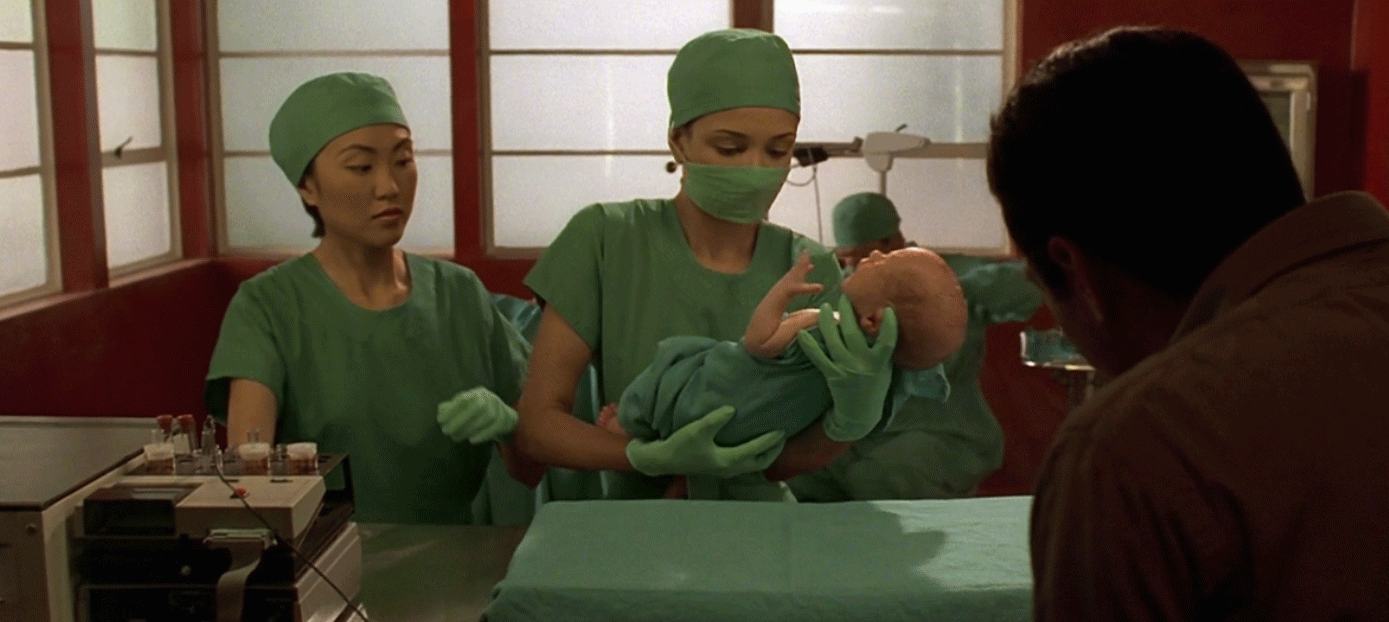Boxer Claressa Shields, shown here in November 2015, wants to follow in Muhammad Ali’s footsteps. Harry How/Getty Images hide caption
toggle caption Harry How/Getty Images
Claressa Shields will be back in the ring Aug. 17 to defend her Olympic gold medal. The 2012 Olympics in London were the first time women were allowed to box in the Games and the 17-year-old high school student from Flint, Mich., made history.
But winning a gold medal didn’t change her life as much as she thought it would.
As an independent journalist and filmmaker, I’ve been following Claressa for the past five years. When I first met Claressa in 2011, I was in a dimly lit auditorium in Toledo, Ohio, photographing the women who were trying to become the first to box in the Olympics. A teenage girl with short hair, thick biceps and a determined stare entered the ring — it was her first fight against adult women.
Shields, who is 5-foot-10 and fights at 165 pounds, dispatched her opponent before the end of the first round.
Claressa had been training in the basement of a small neighborhood gym in Flint, one of the most dangerous cities in the country. Few people had ever seen her fight. Less than a year after I first saw her, there she was in London with a gold medal around her neck.
“I just remember being on the podium and I’m like, ‘Holy crap! This medal is huge,’ ” she told me last month. “And it was so heavy. And when he put it on, I just held [it] and looked and I thought I was about to go crazy. I wanted to jump down and run around the ring, and jump on the ropes and put my hands in the air holding the medal. Just shaking and laughing. It was like someone handed me a million dollars and said, ‘Here you go.’ “
Claressa (right) exchanges punches with Nadezda Torlopova of Russia during the Women’s Middle Boxing final bout during the London 2012 Olympic Games. Scott Heavey/Getty Images hide caption
toggle caption Scott Heavey/Getty Images
Claressa slept with the gold medal, its ribbon wrapped around her wrist, for weeks. After years working toward this goal, she’d achieved it.
But just days after the Olympics ended, Claressa remembers sitting in her coach’s living room back in Flint and thinking: Now what?
“You know, I guess, I’ve won the Olympic gold medal and I don’t know what to think about now,” she told me. “I don’t know what to dream about. That was my dream for years. I was literally going to sleep and I would see all black, like I wasn’t able to dream. My dream had been accomplished. What do I do now?”
Soon she was back in high school, living with her coach because things were too unstable at home. Her mother has long struggled with addiction.
Claressa, showing her championship belts to a classmate, was a high school junior when she won the Olympic gold in 2012. She is the first in her family to graduate from high school. She won a scholarship to Olivet College and studied for a semester, but was unable to keep up with classes and her international tournament schedule. She plans to study again after Rio. Sue Jaye Johnson hide caption
toggle caption Sue Jaye Johnson
As a member of the U.S. national boxing team, Claressa received a stipend of $1,000 a month. But those earnings were going to pay her mom’s water bill and helping her older brother, who was in prison.
“Everybody was saying, ‘You should be signed with Nike, you should be on a Wheaties box, how come you aren’t in this magazine?’ It got to the point where I just shut everybody out. I can’t hear that anymore. I really can’t dwell on what I didn’t get,” she told me.
Why didn’t any of those things happen?
“I don’t know why it didn’t happen,” she said. “I take it as I wasn’t ready for it, I guess. I wasn’t the ideal woman. I wasn’t the pretty girl who wears her hair straight. I don’t know. I guess I wasn’t what they were looking for.”
A few months after the London Games, Claressa was back on the amateur circuit. At her first tournament, Claressa and her coach met with USA Boxing officials about a PR strategy. The officials had one suggestion: Claressa should stop talking about how she likes to beat people up.
“You want me to stop saying that?” Claressa asked the boxing officials. “Why?”
Jason Crutchfield, Claressa’s coach, examines her after a sparring session at Berston Field House in Flint, Michigan. Claressa trained at Berston from age 11 to 17. When she was 13, and before it was announced that women would be allowed to box in the Olympics, Crutchfield predicted she would win the Olympic gold. Sue Jaye Johnson hide caption
toggle caption Sue Jaye Johnson
Julie Goldsticker, a USA Boxing PR consultant at the meeting, offered some advice on attracting endorsements.
“I box,” said Claressa.
“I understand that,” Goldsticker replied.
“It’s an image thing,” Jason Cruthchfield, Claressa’s coach, explained. “Just tone it down a little bit.”
Claressa wouldn’t budge.
“Their definition of a woman — you can be tough, but not too tough,” she told me when we spoke recently. “If I want to get in there and kick a girl’s ass, I’m going to kick her ass. That’s it. You might as well have told me to start punching my opponents a little softer so girls won’t feel so threatened.”
It’s one thing for a girl to fight — but to admit that you like it makes a lot of people uncomfortable.
Until 2012, boxing was the last male-only sport in the Olympics. Having women in the ring is a stretch for advertisers and promoters – even for many fans. Claressa’s own father, Clarence Shields, had trouble with it. And he was a boxer.
Clarence was locked up for most of Claressa’s childhood, in prison for robbery. These days, he’s supportive of her boxing career, but it wasn’t always that way.
He and his daughter first talked about boxing when she was 11. He told her it was too bad he didn’t have any sons to train.
“Maybe you could live your dreams through me a bit,” Claressa told him.
Claressa, her niece and her father, Clarence Shields, read a letter from Claressa’s older brother, who is in prison. Clarence was a boxer who was in prison for most of Claressa’s childhood. When Claressa started boxing, he thought she would get beaten up and quit. Sue Jaye Johnson hide caption
toggle caption Sue Jaye Johnson
A week later, she asked her dad if she could box. “And my answer was, ‘Hell, no,'” Clarence said.
“Do you remember the exact words? You said boxing is a man’s sport and that made me so mad.”
“And you should have taken it that way. That was a chauvinist statement, that a girl can’t do it.”
“I’ve been at it ever since. I’m still proving people wrong.”
“Truth be known, little mama, you are awesome.”
Proving people wrong is one of Claressa’s biggest motivations. Now 21, her record is 74 wins and one loss. That single loss was four years ago.
Her goal is to be unstoppable, because that’s what will make people respect and pay attention to women’s boxing. And to her.
To focus on training for Rio, Claressa moved last year to the Olympic Training Center in Colorado Springs. She’s gotten away from the chaos and stress of life in Flint. She’s seen a bigger world. And that’s what she also wants for her mom and younger sister and brother.
“So now, after this Olympics, I want to move my family to Florida or a better place where they can be safer and make a living,” she told me. “I want my family to see things I’ve seen.”
Growing up in Flint, Claressa would run early in the morning to avoid the gun violence that has plagued the city. Last year, Claressa moved to the Colorado Springs Olympic Training Center. After the Rio Olympics, she plans to settle her mother and younger brother, sister and nephew in Florida. Sue Jaye Johnson hide caption
toggle caption Sue Jaye Johnson
This time around, it’s about more than winning a gold medal. Claressa wants to follow in the footsteps of another young, black Olympic boxer who redefined beauty and power both in and out of the ring.
And like Muhammad Ali, Claressa’s fight for recognition is both personal and political. She wants to make the world embrace her power and aggression.
“In Rio, what’s going to happen [is] everybody’s going to be talking about that girl, Claressa Shields, can fight,” she says. “I know for a fact I’m gonna win the Olympics again. I know already. I’m just telling you what is going to happen. I’m going to win. Period.”
Sue Jaye Johnson is the producer of T-Rex: Her Fight for Gold, a film about Claressa Shields premiering Aug. 2 on PBS Independent Lens. She co-produced for Radio Diaries Claressa’s fight to make it to the 2012 Olympics and has been chronicling her life ever since. You can listen to Claressa’s 2012 audio diary on the Radio Diaries Podcast.
The radio version of this online story was produced by Joe Richman and Nellie Gilles of Radio Diaries.
Let’s block ads! (Why?)











